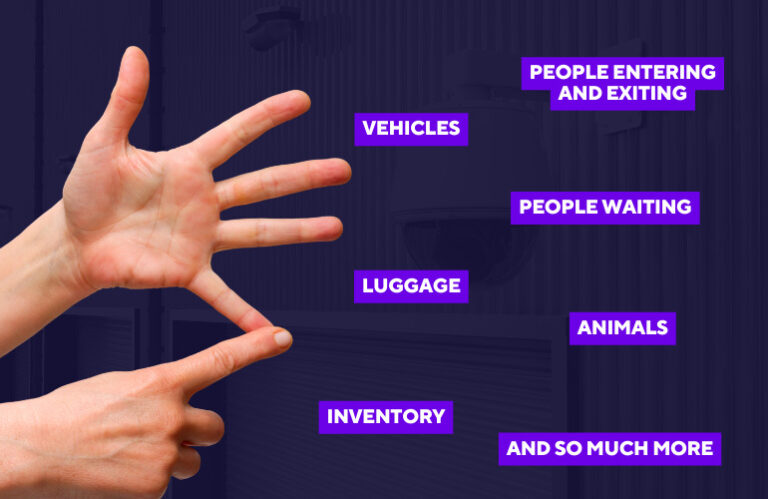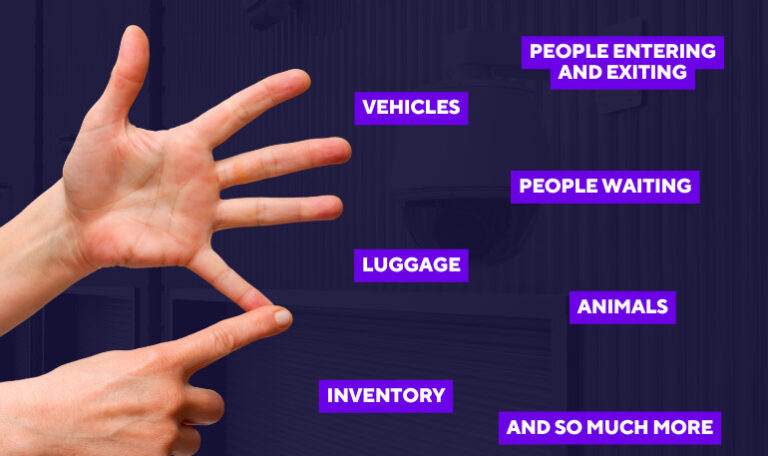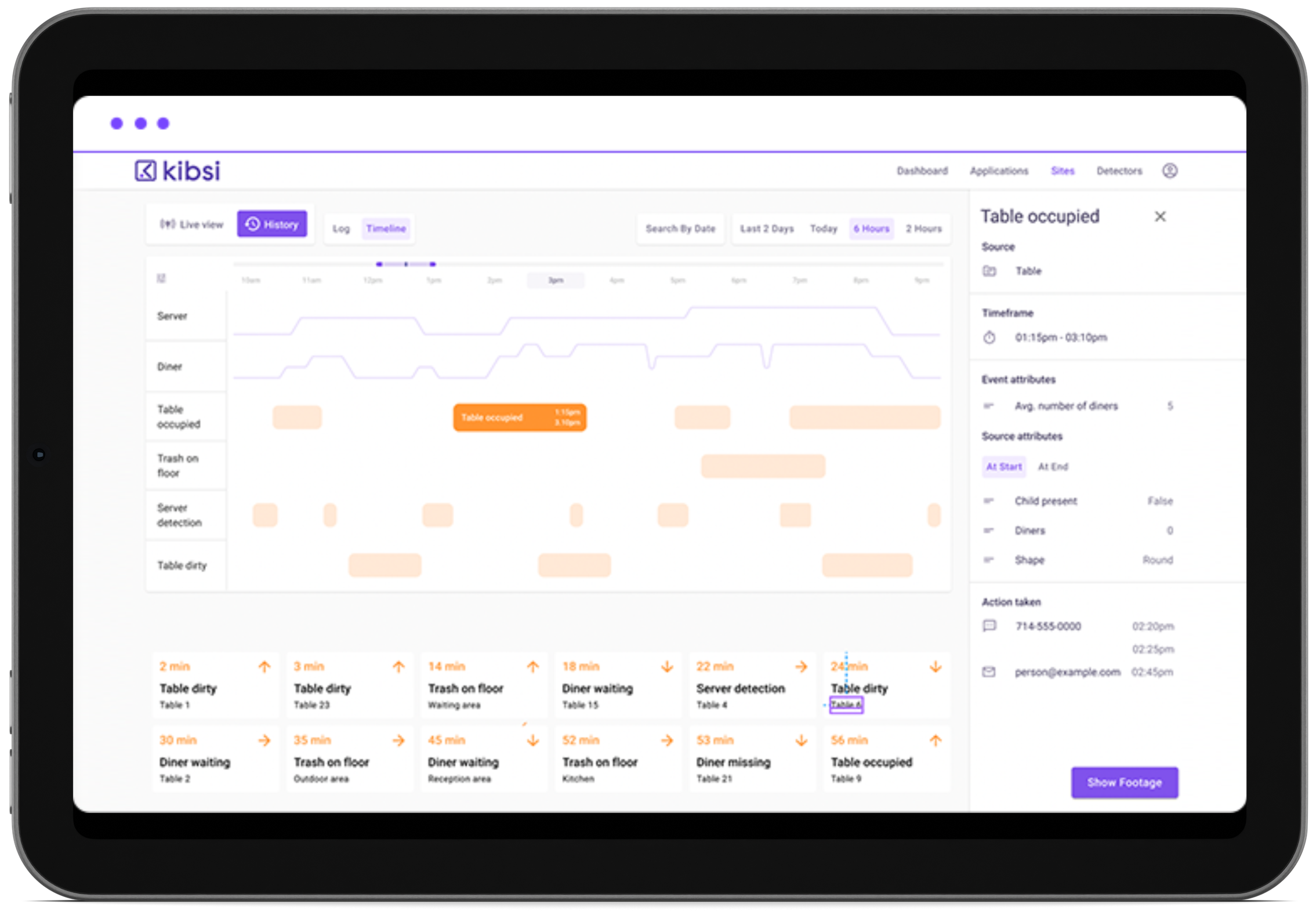As businesses evolve in a rapidly changing landscape, one constant need remains: accurate data. Reliable information is the backbone of strategic decision-making, and in this digital era, there’s one powerful tool making waves in this regard: video-based computer vision, or video intelligence.
The Power of Counting
Counting is a fundamental activity in business operations. It seems simple, but it’s a critical measure of efficiency, inventory, customer behavior, and more. Traditional methods of counting, like manual tallying or sensor-based systems, are often labor-intensive, prone to errors, or limited in their scope. Video intelligence, on the other hand, offers an automated, accurate, and versatile solution.
Video Intelligence: A Game Changer
Enter Kibsi, a SaaS, no-code computer vision platform that transforms video feeds into structured data. With Kibsi, counting is not just about numbers; it’s about deriving meaningful insights that can significantly impact your business operations and strategies.
Let’s explore several scenarios where counting through video intelligence can prove invaluable.
1. Retail Traffic and Queue Management
In a retail environment, understanding footfall patterns is crucial. It allows store managers to optimize the store layout, plan staff schedules, and predict sales patterns. For instance, if Kibsi’s video intelligence reveals a high footfall during the late afternoon hours, the store can increase staff during those hours to ensure excellent customer service.
Counting queue lengths at checkouts is equally critical. Long queues can lead to customer dissatisfaction and lost sales as impatient customers may abandon their purchases. By using Kibsi to monitor and count the number of people in queues, managers can react swiftly – opening new checkouts when needed and enhancing the overall customer experience. In the long run, this can lead to increased customer loyalty and higher sales.
2. Warehouse Inventory Management
Keeping track of inventory is a major challenge for warehouse managers. Manual counting is time-consuming and prone to human error, and automated systems can be expensive to implement and maintain. By using Kibsi to count inventory items, warehouses can ensure real-time inventory accuracy, leading to more efficient order fulfillment and reducing costs associated with stockouts or overstocking. This can significantly improve the warehouse’s operational efficiency and contribute to a smoother supply chain, which ultimately enhances customer satisfaction.
3. Manufacturing Quality Control
In the manufacturing sector, quality control is paramount. Mistakes can lead to product recalls, reputational damage, and substantial financial loss. By using Kibsi to count the number of units produced and identify defects, manufacturers can ensure their products meet the required standards and prevent faulty products from reaching the market. This not only saves money by reducing waste but also enhances the brand’s reputation for quality, leading to greater customer trust and potentially increasing market share.
4. Patient Flow Management in Medical Facilities
Medical facilities such as hospitals and clinics often face the challenge of managing waiting rooms efficiently. By using Kibsi to count the number of patients in waiting rooms in real-time, staff can manage patient flow more effectively.
The counts can provide insights into peak times and waiting durations, enabling the facility to adjust staffing levels or streamline operations to reduce wait times. Reduced wait times can significantly improve patient satisfaction, which is a key performance indicator for healthcare providers. Additionally, in an era where social distancing has become essential, having an accurate count can help manage the number of people in waiting areas to ensure safety guidelines are met.
5. Animal Monitoring in Zoos
Zoos and wildlife parks can use Kibsi’s video intelligence to count and track animals’ movements. This can be particularly useful for monitoring species that are difficult to count manually due to their size, speed, or the environments in which they live.
For example, a zoo can use Kibsi to count the number of times a particular animal visits a feeding station, providing valuable data on its eating habits. Or it could track and count how often certain animals use shared spaces, contributing to research on their social behaviors. This kind of data can inform care routines, enrich research efforts, and ultimately contribute to the well-being of the animals.
6. Facility Management at Stadiums
Stadiums often host thousands of people at a time, making the management of facilities, such as restrooms, a significant logistical challenge. By counting the number of people entering and exiting restrooms, stadium managers can gain insights into usage patterns.
For instance, if Kibsi’s video intelligence reveals that restroom usage peaks during half-time at football games, extra cleaning staff can be scheduled at those times to ensure cleanliness and hygiene. Furthermore, if certain restrooms are consistently used more than others, the stadium could consider redistributing amenities or improving signage to balance usage. This can lead to enhanced visitor experience and more efficient staffing and resource allocation, which are essential for large venues like stadiums.
In each of these cases, counting through video intelligence not only provides valuable data but does so in a way that’s efficient, accurate, and easily integratable into existing systems. This allows businesses and organizations across various sectors to make informed, data-driven decisions that improve their operations and services.
A Real-World Example: Airline Passenger and Luggage Count
In the airline industry, accurate passenger and luggage counts are essential for several reasons. Firstly, for safety and regulatory compliance, airlines need to ensure that the number of passengers on board matches the number on the flight manifest.
Secondly, regarding luggage, airlines have strict policies on the size and number of hand luggage items allowed on board. Manual checks can be slow and cause boarding delays. However, by using Kibsi to count the hand luggage, airlines can quickly identify any passengers who exceed the limit, thus ensuring a fair and consistent application of the rules.
Moreover, having real-time data on passenger and luggage counts can improve airlines’ operational efficiency. For example, if a flight has fewer passengers than expected, the airline could decide to use a smaller aircraft, reducing fuel costs. Or if the number of hand luggage items is higher than usual, the airline could proactively free up overhead bin space to accommodate the luggage, reducing boarding times and improving the passenger experience.
The Future of Business Intelligence
The above examples illustrate the power of video intelligence in counting. But the potential applications of Kibsi’s platform go beyond just counting. From identifying customer behaviors in retail spaces to detecting safety incidents in real-time, Kibsi’s computer vision technology can provide businesses with insights that were previously impossible to achieve without considerable investment in time and resources.
The future of business intelligence is here, and it’s powered by computer vision. As we move into an era defined by data-driven decision-making, tools like Kibsi will become integral to businesses seeking to stay ahead of the curve.
So, the next time you find your business counting on traditional methods for critical data, remember there’s a smarter, more efficient way: count on video intelligence.







